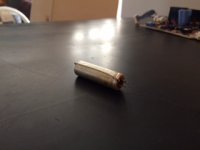Roe
Experienced Member
Can anyone point me to the field maintenance print set for the H777 power supply in a BA11-L enclosure?
The closest I can come with Google-chi is the entire 11/04 prints, more than 400 pages, and if the H777 is there, it's not in the table of contents.
Thanks, I'm finally back to unibus after a long qbus break
The closest I can come with Google-chi is the entire 11/04 prints, more than 400 pages, and if the H777 is there, it's not in the table of contents.
Thanks, I'm finally back to unibus after a long qbus break


